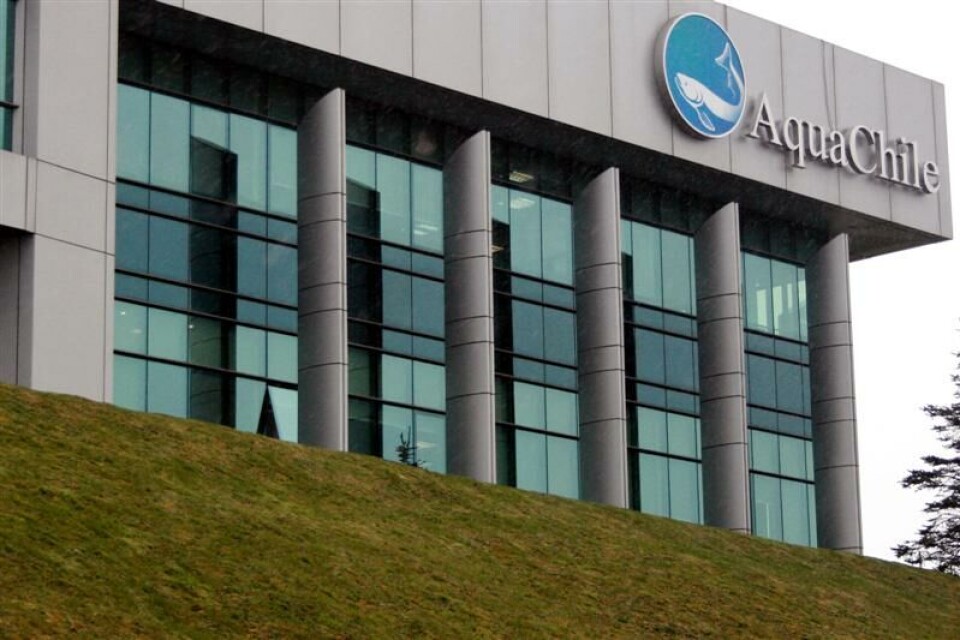
Salmon farmers adopt socially responsible trade names
Opinion
The registered slogan of a Vancouver, B.C. based PR firm states that “Perception is Reality”. This is true in many areas of business, not the least within the salmon farming industry. Well-funded environmental groups have managed to reduce demand for farmed salmon in North America by supporting the publication of studies that erroneously claim that consuming farmed salmon could be hazardous to your health, while nothing could not be farther from the truth.
In order to alleviate some of these falsely built concerns about farmed salmon as a food source, as well as the way it is produced, some companies like Villa Corporation’s Villa Organic in Norway and Grieg Seafood B.C. Ltd’s “Skuna Bay” brands go out of their way to explain to their customers and the public that their fish produced under these labels are both safe to eat and also produced in an environmentally responsible and sustainable fashion. This is all good, but the fact behind the scene is that most of the farmed salmon in the world is generally produced under a set of closely monitored set of government regulations that ensure that environmentally responsible practises are being employed.
Another recent addition to the list of companies that encourages consumers to embrace a form of "Conscious Choice" at the fish counter by purchasing salmon that is grown at low densities and using less fish meal is AquaChile through its new brand and trade mark Verlasso, as this Christmas Holiday PRNewswire explains;
Now is the time of year when most Americans resolve to make positive lifestyle changes toward better health. Often, though, these resolutions are too stringent and short-lived. When it comes to food, there's an emerging trend of Conscious Cuisine, offering consumers a path toward pleasure while preserving their health and the health of the earth. Verlasso®, the world’s first provider of harmoniously raised fish, is part of this trend, educating consumers on how salmon should be raised, to help make a more conscious choice at the fish counter.
Conscious Cuisine recognizes that most people choose food based on flavor, but are more fulfilled when they opt for foods raised with deep respect for them and the planet. Verlasso's harmonious approach to salmon farming brings one of the healthiest and most delicious choices to consumers and balances the needs for nutrition and the needs of the environment. It's low in fat and high in protein and Omega-3s.
"With the world's population growing beyond seven billion, farmed seafood plays an increasingly important role in feeding - and satisfying - a hungry world," said Allyson Fish, director of Verlasso. "To remain a truly conscious choice, seafood farming practices must evolve to include a true consideration for the health of the ocean and its inhabitants. Verlasso strives to produce the highest-quality salmon, raised with the deepest care for the environment, as well as taste, nutrition, and economics."
Verlasso's most significant innovation is its use of 75 percent fewer feeder fish to produce healthy salmon rich in Omega-3s. In traditional salmon farms, salmon get their Omega-3s from their diets. Currently, these Omega-3s come from fish oils provided by wild-caught feeder fish, which puts a significant strain on our oceans. In addition to greatly reducing the drain on the ocean's resources, Verlasso's farming practices consciously change the fundamental relationship between the salmon and their environment. The company is committed to improving its farming methods continuously to ensure customers the best salmon possible today and for generations to come: Verlasso salmon are raised in the cold, clean waters of Southern Patagonia, away from industrial development, ensuring a healthier salmon.
Verlasso salmon swim freely in spacious pens - less than four fish per ton of water - producing a leaner fish than traditionally farmed salmon and reducing the impact on the local eco-system. Every phase of the salmon's life - from egg to harvest - is accounted for, ensuring integrity and freshness all the way to the consumer. Making more conscious decisions at the fish counter doesn't have to be challenging. In fact, here are a few key tips that Verlasso recommends:
- Ask what is the difference between farmed and wild? Is the wild fish in abundant supply or are the fish populations on the decline?
- Ask how the wild fish are caught. Fishing practices can vary widely around the globe. Some countries allow over fishing. There can be significant habitat damage from fishing gear. And international laws prohibiting the catch of unintended species, bycatch, like birds, dolphins, and other marine mammals, are not enforced.
- If farmed, ask if the farming practices are environmentally friendly and designed to nurture the health of the fish throughout its lifecycle.
- Find out where the farm is located. Is it located in waters near industry or is it in a pure environment where the fish will flourish?
- Was the fish shipped fresh or frozen? If fresh, ask when the fish was caught. If frozen, find out the best way to defrost.
- What does "sushi grade" mean? How might this cut be best prepared?
Look for fish with firm, healthy looking flesh. The fish should have no deep or offensive smell and there should be no milky liquid on the meat. If skin is attached, it should be as shiny as when it came out of the water. AquaChile and DuPont formed a collaboration that will join the collective innovation and aquaculture expertise of the companies to identify how to raise fish sustainably to provide nutritious protein for a growing population.






















































